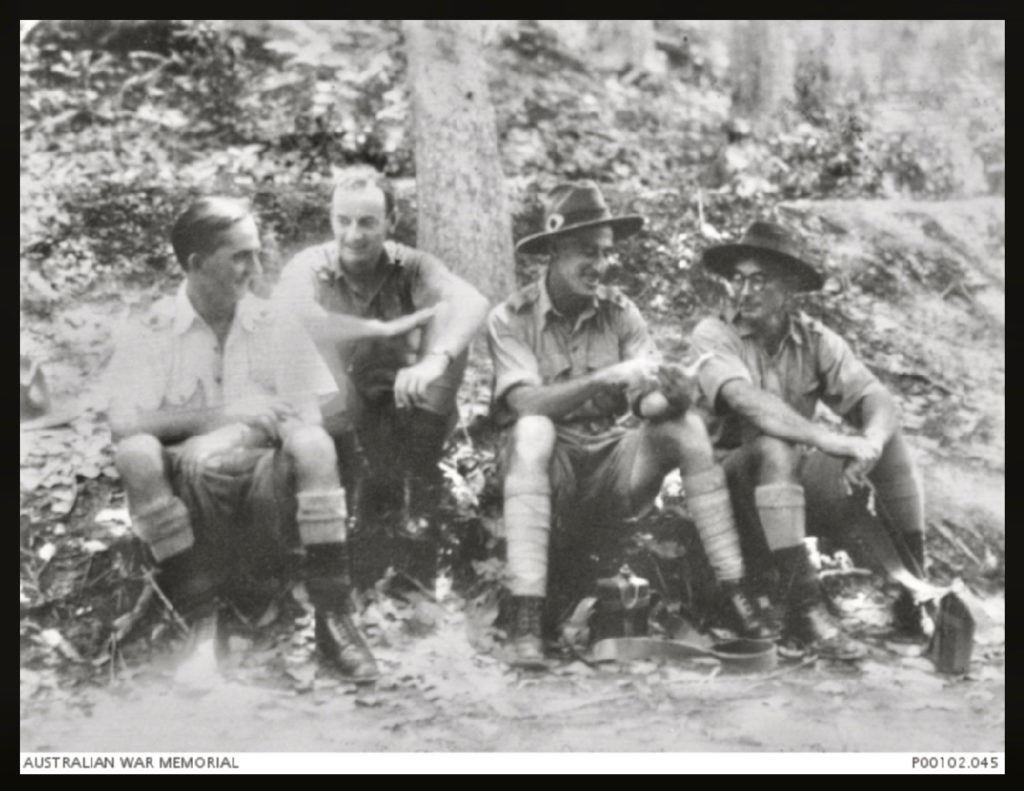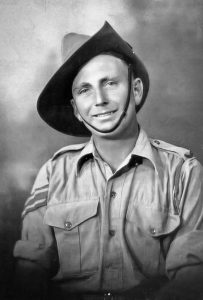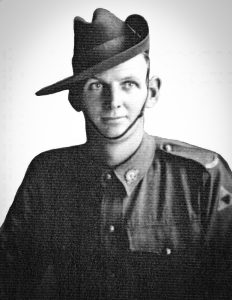‘H’ Force consisted of six groups/parties within ‘H’ Force from H1 to H6 Officers Party.
Two of these groups included 32 men from 2/4th – H3 and H6 Officer’s Party – 7 men died from illness, including Nobby Hall and Doug Hall. It appears the two men decided to remain together and were selected with ‘H’ Force. Several men who returned to Singapore had been seriously ill. Gleeson had his leg amputated.
Gleeson’s name is included with those left at Kanchanaburi Hospital Camps (1 or 2) with other sick between 8 December 1943 to 24 April 1944 then returned to Singapore 29 April 1944 – several months after the main group returned.
‘H’ Force HQ was at Tampie and the work Force were in camps along a 20 km stretch of railway line between Tonchan and Hintok.
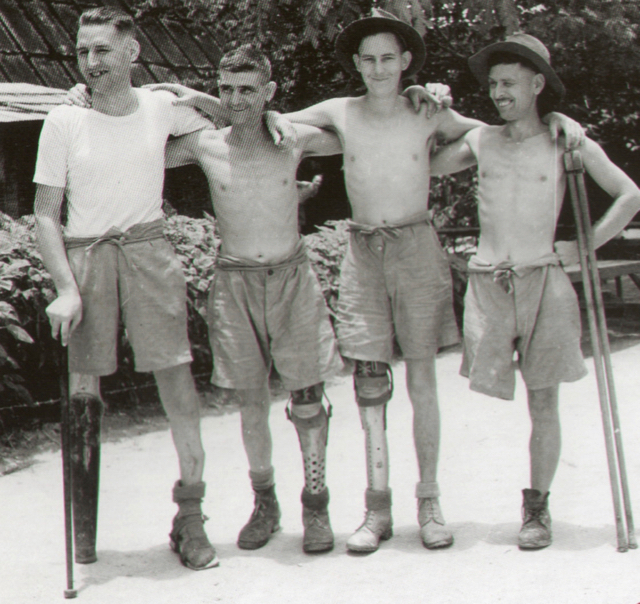
The Officers were expected to participate on labouring on the rail link like the other ranks in ‘H’ Force. We can surmise that by April/May the Japanese were running out of POW labour and finding their pool of labour was not limitless. ‘H’ Force had been despatched to this area in Thailand to beef up the labour force. This middle section had encountered problems and progress fallen behind in schedule.
Like ‘D’ Force V Battalion had been separated from Japanese Thailand Administration Group 4, ‘H’ Force Groups were similarly separated and neglected because they remained under Singapore’s administration and not Thailand.
This may explain why the sick of ‘H’ Force were not evacuated down river by barge to Tarsau and instead moved by train to Kanchanaburi Hospital Camp.
‘H’ Force totalled 3,270 POWs which included 670 Australians spread between H3 and H6 Groups. Included were 1141 British, 588 Dutch 26 American and the remaining 845 Malay volunteers & Indian soldiers.
The first ‘H’ Force train departed Singapore on 5 May 1943. This was virtually on top of the last ‘F’ Force train’s departure which had commenced 18 April 1943.
The Japanese were desperate to complete the rail construction schedule set down by Tokyo.
‘H’ Force Group 3
The campsite was on uncleared, slightly sloping ground and located roughly 450 yards east of Hellfire Pass Cutting and to the north of ‘S’ Force S Battalion’s Camp, Kanu II, believed to be 1.42 kilometres away.
A small area about the size of a lawn bowls green was cleared on afternoon of ‘H’ Force’s arrival on 21 May 1943 and 20 tents were pitched. During the following two days the camp area was enlarged and bamboo floors laid inside tents. Water was drawn from small stream and boiled prior to use as a precautionary practice. The stream was just south of the campsite and was crossed by a bridge on the Kanu to Hintok access road. There was another stream running south of Kanu II ‘D’ Force Camp which was also crossed by a bridge on the same road.
‘H’ Force Group 3 departed Singapore 8 May 1943 arrived at Non Pladuk four days later moving to the nearby Konma transit camp.
Their 170 km march to their camp site would take 5 days.
The following day 13 May 1943, this group marched out of Konma transit camp at 2300 hours, arriving at their first rest camp at 1000 hours the next day. ‘H’ Force followed in the steps of ‘F’ Force to Kanchanaburi heading for Malayan Hamlet/Kanu II.
The Force Commander was Lt-Col HR Humphries of Royal Artillery, his second in command was Lt-Col Oaks.
‘H’ Force was initially an all-Australian force under the command of Lt-Col R.F. Oakes.
Please read further about Lt-Col Oakes – A POW leader who failed his men on more than on occasion
Major Bert Saggers from 2/4th was his second in command and in charge of the group’s pay and records.
At Kanchanaburi ‘H’ Force camped in an open paddock. During the night local Thais crept amongst the tired, sleeping men, stealing whatever they could escape with. This would have been maddening for the men. They rested during the day and marched out at night to Temple transit Camp which ‘F’ Force had earlier passed through.
During their journey they hired 20 oxen and carts to carry their gear forward to Tardan Bridge Camp as had ‘F’ Force.
Their routine was to march by night about 15 miles and rest during the day until they covered the total distance of 90 miles. They reached Kanu III Camp at 0400 hours on 21 May. The last gruelling 4 miles to Malayan Camp took 3 hours to complete.
By the time they reached Malayan Camp the Force had increased in number to include 114 British and POWs ex-Java. On 30 May a further 98 additional stragglers marched in. Total numbers now included approximately 500 Australians, 200 British and some Americans.
111 Australians and 106 British POWs would die at Malayan Hamlet.
‘H’ Force Doctors:
NX706434 Major K.J. Fagan 2/10 AGH – Camp Medical Officer. (See below)
NX70643 39316 Major E.A. Marsden 2/10th AGH
NX76600 Capt. Mac. K. Winchester (Dentist) 43 ADU
Japanese engineers called for the first work party on 24 May, 3 days after ‘H’ Force arrived. Officers had difficulty firming up numbers because of high number of sick POWs.
The workforce was split into 4 shifts from A to D with each shift numbering 100 men. Two shifts worked during daylight and the other two during darkness.
Within weeks the weather began closing in for monsoon season and the Camp anticipating a possible cholera outbreak had pitched two tents in the jungle about 165 yards from the main camp. The first case was diagnosed at 1000 hours on 16 June. The POW’s death soon followed at 1630 hours.
With monsoonal rains the area around the camp became a quagmire. Long working hours with only minimal food supplies and Japanese engineers demanding POW workers whether ill not and the apparent lack of leadership from Oats, the men would have felt very alone.
By this time cholera had already appeared at Kanu II and Hintok Road Camps which had used a separate water supply.
Following the cholera outbreak at Malayan Camp on 18 June 1943, 59 British were brought from Kanu III to set up a new camp called Kanu IIIa (Tampie North) or K IIIr (Tampie South) Advance Camp.
On 25 August 1943, 83 Australians from Groups H3 and H6 joined ‘H’ Force No. 1 Sub-Section and travelled by train to Konkoita in a last minute dash to complete the railway in that sector.
On 8 September 1943 the first Australian party from ‘H’ Force consisting of stretcher cases was evacuated to Kanchanaburi. During the following few days a further 4 parties were evacuated totalling about 500 men. This left a workforce of about 25 men to remain behind and clean up the campsite.
On 16 September the rear party who had been at Tonchan Spring Camp moved forward to Kanu IIIa (Tampie North Camp) to join the other Australians before this last group also moved south to Kanchanaburi.
The evacuation of sick to Kanchanaburi had commenced prematurely on 29 July 1943 before ‘F’ and ‘H’ Force Hospital had been completed. For the next month the sick were accommodated at ‘D’ Force Base Hospital Camp No. 1 until their own hospital was completed on 27 August and able to accept them.
As soon as the sick were classified fit, they were transferred to a ‘Fit Camp’ located two miles away in a jungle clearing. On 19 November 1943 the first party of 500 fit men left under the command of Lt-Col T.H. Newey as an advance party back to Singapore. Newey had come into Kanchanaburi from Konkoita with ‘H’ Force No. 1 Sub-Section, arriving between 8th-12th November 1943.
Between 20 November and 10 December 1943, ‘H’ Force returned to Singapore en-masse by train with the exception of some seriously ill men who would not return until May 1944. 62 POWs were left behind at Kanchanaburi hospital Camp when the main body left for Singapore. Of this number 14 were Australian of whom five died. The remainder arrived Changi May 1944.
Lt Col Oakes returned in ‘good condition’ – he had ordered that he received double portions of food whilst on the Burma-Thai Railway. The POWs in the cookhouse hated that often Oakes came around looking to find best portions of food, knowing that most POWs out working on the rail link were starving and suffering terrible tropical illnesses. Oakes seemed not care.
Singapore would learn of the appalling conditions experienced at the construction camps on the Burma-Thai Rail link.
‘H’ Force’s Burma-Thai Railway nightmare lasted less than 7 months.
Those of ‘H’ Force who survived were fortunate to return to the relative safety and comfort of Changi December 1943.
From this time onwards PoWs from Thailand and Burma were preparing to work in Japan – or the remainder were either sick in various Camp Hospitals or were out on work parties throughout Thailand.
Those who remained were looking at another 20 months in Thailand’s jungle or sailing on Hell ships to Japan and working in mines, or for those on the ‘Rakuyo’ Maru fighting to survive the sinking of their transport ship to Japan in Sept 1944.
An informal group portrait of Company Commanders of 2/19th Battalion on reconnaissance near Seremban, sitting on ground talking. Left to right: NX34993 Major (Maj) E. H. J. (Bert) Bradley, `C’ Company, killed in action on 12 February 1942; Maj T. G. (Tom) Vincent, `D’ Company, who was awarded the Military Cross (MC), and killed in action on 9 February 1942; Lieutenant Colonel (Lt Col) R. F. (Roley) Oakes, `A’ Company; Lt Col Charles Anderson, Commanding Officer. Lt Col Anderson was awarded the Victoria Cross (VC) for his leadership in the Malayan campaign.
LEADERSHIP OF POWS
In recent years researchers of POW Leadership has shown Lt-Col Oakes NX12525 failed the men of ‘H ‘Force spending much of his time in his tent and not venturing outside to see how they were faring in these horrific circumstances, working excessively long hours, with little food, struck down by tropical illnesses and subjected to random and frequent brutality by the Japanese engineers and guards. Too often those very sick men were unable to remain at the camp ‘hospital’ – the Japanese guards demanded their daily men quota. This was the time when the men needed to know there was somebody watching for them, standing up for them!
It was mostly Camp Doctors who became the leaders the POWs required. Their strong leadership is well documented. Read the stories of Australian POWs working on the Burma-Thai Railway.
Please read this interesting and revealing thesis. In particular please read P80, 81.
Officers who excelled in the battle field were sometimes unable to adapt to life as a POW and lead their men.
From the moment ‘H’ Force arrived in Thailand Major Kevin James Fagan became completely occupied with attempting to control a severe epidemic of cholera in the men who were already suffering from chronic dysentery, malnutrition and tropical ulcers. He had the unenviable task of sending sick men out to work to fill the daily Japanese quota of men.
He was also ordered to select 100 fit men to remain behind to continue work on the rail while everybody else were sent south eventually back to Singapore.
By the time ‘H’ Force returned to Sime Road Camp, Singapore Fagan was in a state of physical exhaustion and was critically ill with cerebral malaria. Fagan suffered fever and delirium for more than a week – everybody waited anxiously – and the good news of his recovery was very welcomed! Fagan was a popular man amongst the men.
_______________
Major Saggers (‘A’ Coy HQ – transf to ‘E’ Coy SRB) and a six further 2/4th officers plus Lt Colville Vincent were included in ‘H’ Force –
Lt.s Don Lee (‘B’ Coy 9 Pltn)
Vic Mentiplay (Btn HQ SRB)
George Branson (6 Pltn)
Bernie O’Sullivan (3 Pltn)
T.R. Ambrose (10 Pltn)
Bob Learmonth (5 Pltn)
Colville D J Vincent – Embark. with 2/20th, transf 2/29th Pioneer Pltn, tranf 2/4th 14 Jan 1943)
‘Eric Watt of ‘C’ Coy was hospitalised in Singapore at Changi with a very bad abscess. Watt apparently had a lot of sickness up north, beri beri, malaria and dysentery. He speaks highly of Leith and Miller of ‘C’ Coy. They did an amazing job for other machine gunners in looking after and washing them and also in scrounging food for them. Stories such as this help to restore one’s faith in human nature.’
The above was an entry in Tom Buninng’s diary relating to H3 Group at Malayan Hamlet. The fortunate Tom Bunning remained at Singapore throughout the war with Garden Party.
WX8185 Jim J. Barry – ‘B’ Coy, 7 Pltn. Later X Party Singapore.
WX10282 ‘Curly’ Collins – ‘B’ Coy 7 Pltn
WX7943 Robert Drysdale – Scotsman – ‘B’ Coy, 9 Pltn – later X Party Singapore
WX5064 Ted Elliot – Driver ‘C’ Coy HQ – later X Party Singapore
WX9132 Arthur Gamble – ‘C’ Coy, 12 Pltn.
WX16736 Stephen Gleeson – his right leg was amputated and he remained Kanchanburil when ‘H’ Force returned to Singapore by mid Dec 1943. Gleeson returned after Dec 1943 to Singapore.
WX9350 Patrick (George) Hodgins Driver ‘B’ Coy, 7 Pltn – later X Party, Singapore
WX9915 Francis Herbert Keirle – HQ Coy 1 Pltn, Signals – contracted cholera at Malayan Hamlet 20 June 1943 and survived!
WX4917 John (Jock) Leith – Scotsman – ‘C’ Coy,10 Pltn -evacuated 10 Sept 43 with beri beri to Kanchanaburi. Survived.
WX10806 Ken Lessels – HQ Coy Stretcher Bearer – Evacuated to Kanchaburi 21 Jun 43 with Cholera. Survived returned to Singapore.later X6 Party, Singapore
WX6203 Jim McSkene – ‘D’ Coy HQ. Evacuated with beri beri Oct 43 to Kanchanaburi. Sime Road Camp Sinapore.
WX7885 Alby Miller – ‘C’ Coy 11 Pltn. Kanu II, Malayan Hamlet, Kanu IIIa (Tampie North), Kanchanaburi. Sime Road Camp Singapore.
WX13816 Donald David Pearson – ‘B’ Coy 7 Pltn. Kanu II, Malayan Hamlet, Kanchanaburi.
WX7835 William Lowes Rosel (Bill) – from Collie, Driver ‘C’ Coy 11 Pltn
WX9067 Eric George Watt – ‘C’ Coy 12 Pltn
WX5204 Harry Worsdell ‘D’ Coy, 14 Ptn
WX9379 Thomas William Zeeb ‘B’ Coy HQ
The overall death rate of ‘H’ Force totalled 885 men (including 179 Australians) – 27.37% of total Force.
There were seven 2/4th deaths – four of these had contracted cholera.
1 Jul 1943 WX7628 Howard Edgar Joseph (known as Tim) Sgt, ‘A’ Coy 6 Pltn – died cholera aged 31 years Grave No. 22 Malayan Hamlet (not cremated).
‘Tim’ Howard married Elsie Beryl Pickersgill in 1932. They had two children. Their youngest, son Peter John Howard born in 1939 tragically died in 1944 aged 5 years. Peter’s father unknown to the family, had already died of cholera in Thailand.
Elsie remarried in 1950 however was again widowed in 1972. She died at Bunbury in 1992 aged 79 years.
.
17 Jul 1943 WX8747 Hall William Harrison (Nobby) – ‘B’ Coy, 8 Pltn- died beri-beri, cerebral malaria and cholera at Malayan Hamlet aged 42 years. Buried Grace No. 38 (not cremated).
Nobby was father to four children.
Aged 22 years he sailed from London arriving Dec 1921 at Fremantle.
27 Jul 1943 WX9052 McDonough Henry Elvin – ‘C’ Coy 11 Pltn – died of cholera aged 28 years, buried unmarked cemetery approx 300 yds North of Kanu IIa (Tampie North) on Kanu-Hintok Road, Grave No 18.
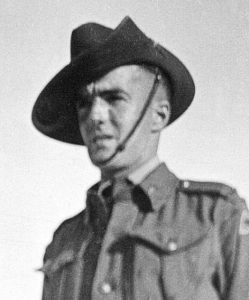
7 Sep 1943 WX7623 Shelton George Tom – ‘D’ Coy 15 Pltn – died Malayan Hamlet, post pneumonia and beri-beri aged 24 years. Buried Grave No. 80 Malayan Hamlet.
24 Oct 1943 WX7250 Kidd George – ‘B’ Coy 9 Pltn – Enlisted from Boulder. Died of cardiac beri-beri Kanchanaburi aged 37 years. Buried Grave No. 214 Kanchanaburi.

24 Jan 1944 WX9293 Langdon Ronald Guy
Driver ‘D’ Coy 13 Pltn –
died of cardiac beri-beri at
Sime Road Camp, Singapore aged 32 years having earlier been evacuated to Kanchanaburi from Malayan Hamlet with cholera and beri-beri and returned to Singapore.
21 May 1944 WX10370 Hall Douglas Charles John – ‘B’ Coy 8 Pltn – died septic thrombosis AGH Roberts Barracks Changi, 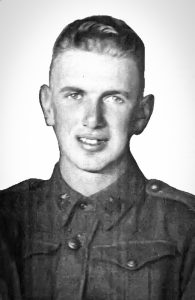 Singapore aged 25 years. Doug Hall made the journey back to Singapore, only to succumb to thrombosis on 21 May 1944.
Singapore aged 25 years. Doug Hall made the journey back to Singapore, only to succumb to thrombosis on 21 May 1944.
Buried AIF Cemetery, Changi, Grave No. 134.
Doug’s father was a WW1 Veteran, enlisted with 11th Btn. In 1917 he was reported seriously ill for 2nd time. ‘Billy’ Hall died at Woorooloo Sanitarium in 1923 aged 41 years. Doug was about 4 years old.

